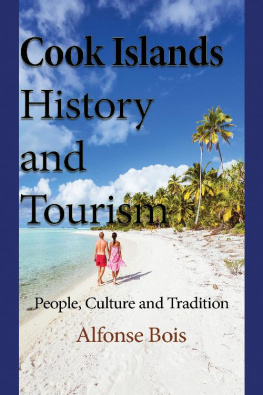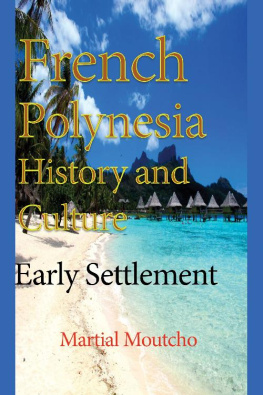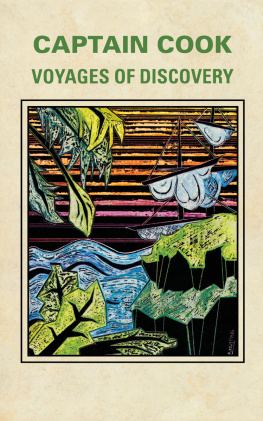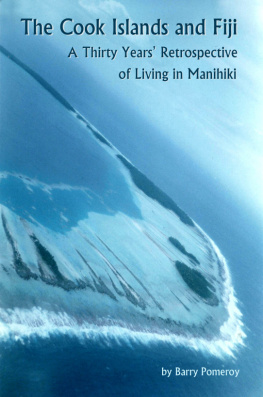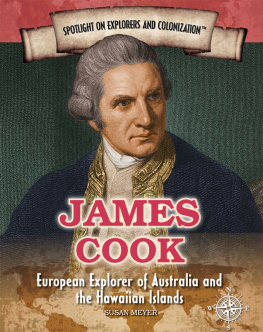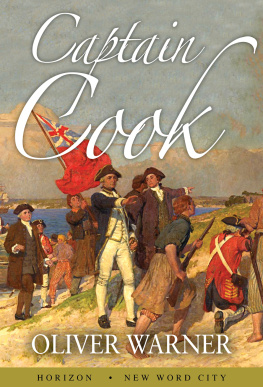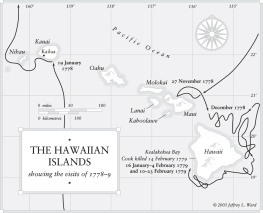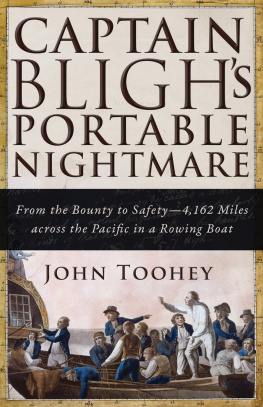Copyright Notice
Copyright 2017 LA PROVENCE
All Rights Reserved
You are not authorized to reproduce this title in any format and for any purpose. This title is published under Copyright protected terms and condition, of which its distribution and sales is strictly limited to the assigned Distributor/s and the Marketplace involved. You can only obtain a copy through legal source, and not to be tempered with any modification to it. Your understanding and compliance is appreciated.
First Printing: 2017.
Printed in the U.S.A
Publisher by LA PROVENCE PRINT .
17 rue du Marchal Foch CEDEX 1 Roubaix France.
Travel and Tourism
Travel Guide
Immune to the usual tourism hype, the Cook Islands deserve the title of the best kept secret in the Pacific. Located halfway between Hawaii and New Zealand, they lie in the heart of enchanting Polynesia. 15 sandy enclaves, the Cook Islands are pure seclusion and a remote escape for paradise-seekers. Fringed by some of the most captivating beaches on the planet, these islands are the perfect hideout from the manic pace of the urban world.
Lapped by the seductive waters of the Pacific, the Cook Islands create a paradise that combine hypnotizing natural attractions with an idyllic climate and a rich Polynesian culture preserved by some of the friendliest and warmest people youll ever meet. The natives welcome outsiders with a smile and willingly allowing visitors to partake in the riches of their homeland and their thousand-year-old culture.
Rarotonga, the largest jewel of the Cook Islands, attracts the most guests with a mix of fine beaches, jungle and rugged mountains. While Rarotonga can single-handedly provide you an adventure-filled and memorable holiday, the other islands are also worth a wander. Aitutaki, for example, is notable for whats down below. Under its hook-shaped landmass lies a vast coral lagoon filled with mesmerizing marine creatures from giant clams to all kinds of tropical fish.
Sprawling jungles, glorious beaches, underwater wonders, mystifying uninhabited islets, and a fascinating culture await travelers to the Cook Islands. Atius limestone caves and fragrant coffee plantations along with the traditional villages on the islands of Mangala, Mauke and Mitiaro and the black pearl fields of Manihiki and Penrhyn are just some of the must-see attractions.
It is very easy to find a quiet hideaway on any of the Cook Islands, many of which are practically unpopulated. The larger atolls like Rarotonga offer a mix of resorts, villas, hotels, bungalows, and a number of self-catering apartments that are steadily improving in terms of amenities and service to match the growing number of visitors. If you are looking for a beachside setting with scenic views, the options are endless as long as you book in advance. Whether you want an extravagant resort-style hotel or a more laid-back backpackers lodge, plan ahead because the secret is slowly getting out. Unfortunately, camping is unheard of, and pitching a tent on the beach is not allowed.
Rarotonga International Airport serves as the main gateway to the Cook Islands. Weekly direct flights arrive from Los Angeles, as well as other popular hubs like Fiji and Sydney, and there are daily connections to Auckland. Getting around the main islands is easy with plenty of taxis, car rentals, motor scooters, and bikes. Ferries to the more remote islands are reserved for the most intrepid travelers, as services can be weeks apart. Inter-island flights between Rarotonga and Aitutaki and others are available to serve curious island hoppers.
[Escape the Australian winter and soak up the tropical warmth of the South Pacific. Discover the Cook Islands in the heart of Polynesia, 3000km north east of Auckland. On this handcrafted journey, we are guided through exotic landscapes by local guides and notable characters who introduce us to the ancient culture, people and natural beauty of the islands. On the main island of Rarotonga, we visit colourful markets, go on an island discovery tour, enjoy history walks and hike the renowned cross-island track. Join local guides in conservation areas and explore traditional plantation valleys. We then spend four nights on blissfully remote Aitutaki, the quintessential island paradise as noted in the book 1000 places to see before you die. We cruise and snorkel the turquoise lagoon waters and learn about local history and culture. There are few places left in the world like the island of Atiu. Over three nights, we immerse ourselves in the sights and sounds of traditional island nights with Cook Island dancers and the tastes of tropical feasts. We venture into the native jungle, explore Kopeka Caves (home to rare birdlife) and spend time with the legendary Birdman George. With the tour starting and ending in Rarotonga, flights can be easily arranged direct from Sydney or via New Zealand]
Airport
The international airport of the Cook Islands resides on the main island of Rarotonga. It is situated just under two miles from the downtown area of Avarua, right on the northern coast. Air New Zealand regularly flies to and from Sydney, Auckland and Los Angeles, but seasonal flights to Christchurch are available. The local inter-island carrier between the larger islands like Mitiaro, Atiu, Aitutaki, Mauke, Manihiki, and Mangaia is Air Rarotonga, but Air Tahiti and Virgin Australia also fly to Papeete and Auckland, respectively. Be sure to have all your travel plans in order before flying to this secluded paradise. Failure to show proof of a hotel reservation may cause you to be sent back as early as the next flight out.
Rarotonga Airport is a modern facility featuring basic amenities for communication, including WiFi for mobile devices. There is an ATM right past customs in the international arrivals area. Lounges are on hand with a good range of dining options. There is a Domestic Gate area with garden seating, a caf and vending machines. The International Lounge is situated next to the duty free shops, and is home to a kiosk selling hot and cold beverages and a snack bar. The airside lounge managed by Air New Zealand (Koru Lounge) offers complimentary WiFi, food, and drinks.
There is a public parking lot outside of the airport. Facing the main entrance is the Aquarius Pacific Airport Hotel, which is a practical accommodation for those with early or late flights. Coach and bus transfers are available between the airport and downtown Avarua. Taxi services may also be arranged in advance. Most Cook Islands hotels also offer airport pick up and there are several rental car offices in the terminal.
Shopping and Leisure
The Cook Islands may not exactly be the place for all-out retail therapy, but they do have their share of downtown bazaars and local shops that sell all kinds of traditional arts and handicrafts. Shopping is especially enjoyable as merchants are typically much less pushy than other more built-up locations. Avarua has a great selection of boutiques where you can buy fashion and local products.
Stores are typically open throughout the day from 9:00 a.m. until 4:00 p.m. on weekdays, with most closed on Sunday. Bargaining is not a customary, but dont worry, prices are reasonable. You can find deals on jewelry, clothing, art, home goods, and other gift items. Locally made crafts make the perfect Cook Island souvenirs, especially carvings, woven products and tivaivai , a hand-sewn bed covering made by Polynesian women.
Blessed with rich lands where fragrant and exotic flowers grow, the Cook Islands is also known for its locally produced oils, soaps and perfumes, with scents extracted from frangipani, jasmine, gardenia, and other blooms. International perfumes are sold in Rarotonga at duty-free prices. Local stamps could be an interesting find for philatelists, as they are especially noted for their artistic designs featuring unique birds, flowers, shells, fish, historical events, and personalities.
Next page
